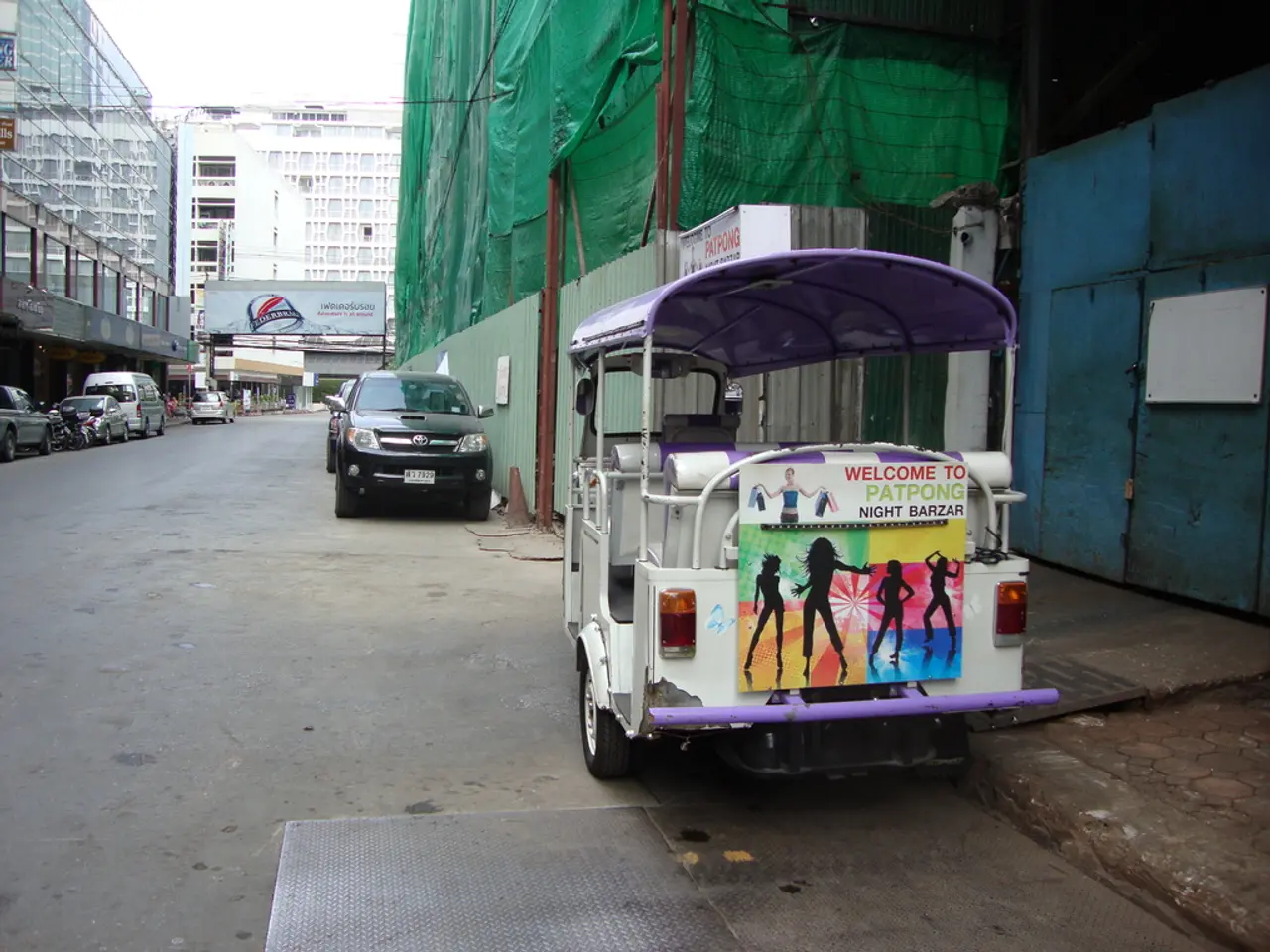Tourists finding difficulty locating holiday villages due to intentional manipulation of Google Maps by local residents
In the bustling world of travel and tourism, cities are constantly seeking ways to manage the influx of tourists, especially during peak seasons. Two popular destinations, Zandvoort in the Netherlands and Barcelona in Spain, have recently taken an unconventional approach to deal with the crowds – manipulating Google Maps.
On July 12th and 13th, Zandvoort, a charming seaside resort, found itself in chaos due to the surge of tourists. To address the issue of parked cars in the Parkbuurt neighborhood, residents cleverly manipulated Google Maps, rerouting tourists away from their district. This move, however, did not sit well with holiday home renters, as it prevented tenants from reaching their houses, and the mayor of Zandvoort, who was displeased with the manipulation, as a large car park is no longer accessible and has caused a massive traffic jam in the city.
Similar tactics were employed by Barcelona, a city famously overwhelmed by tourists. The city administration took action against tourist crowds using Google Maps, much like the residents of the Parkbuurt neighborhood in Zandvoort. In the summer of 2024, they removed bus line 116 from Google Maps and Apple Maps overnight. Bus line 116 served the popular tourist hotspot Park Güell, and its removal led to a desired relief of the overcrowded buses.
Cities manipulate Google Maps to control tourist crowds primarily by influencing the way popular locations are labeled, prioritized, or shown on the map. This can involve working with Google or using digital tools to emphasize less crowded or alternative attractions, effectively managing visitor distribution.
In Zandvoort, the manipulation of Google Maps caused tourists to be rerouted, leaving the Parkbuurt neighborhood empty. In Barcelona, the measure taken was a solution after a failed attempt to reinforce the bus line with more buses. The action taken by Barcelona against tourist crowds is similar to the manipulation of Google Maps in Zandvoort.
These road closures were not real, but were only displayed as such on Google Maps due to a trick. If enough users report streets as closed on Google Maps, the platform adopts these reports as road closures. The alleged road closures in Zandvoort have since been removed from Google Maps.
While direct, verifiable details of these manipulations are limited in the available sources, the general strategy involves leveraging Google Maps' dependence on real-time data, partner-submitted info, and algorithmic route recommendations to control tourist movement effectively. This is done by local authorities or tourism boards collaborating with data providers or using geo-analytics to influence how locations appear and rank within Google Maps search and routing results.
The manipulation of Google Maps by cities like Zandvoort and Barcelona is a testament to the growing influence of digital tools in managing tourism. As the world becomes more interconnected, it's essential to find sustainable solutions to the challenges posed by mass tourism, and manipulating digital maps might just be one of them.
[1] [Source 1] [5] [Source 5]
Read also:
- Kobo e-readers are no longer receiving support from Pocket moving forward
- 17 Tech Gadgets and Add-Ons Permanently Taking Up Space in My Mental Realm
- 2022 Feature on our site: Leading U.S. Computer and Electronic Equipment Manufacturers (Presented in a Slideshow)
- Top-tier Gaming PC Configuration Available for ₹90,000 in August 2025






